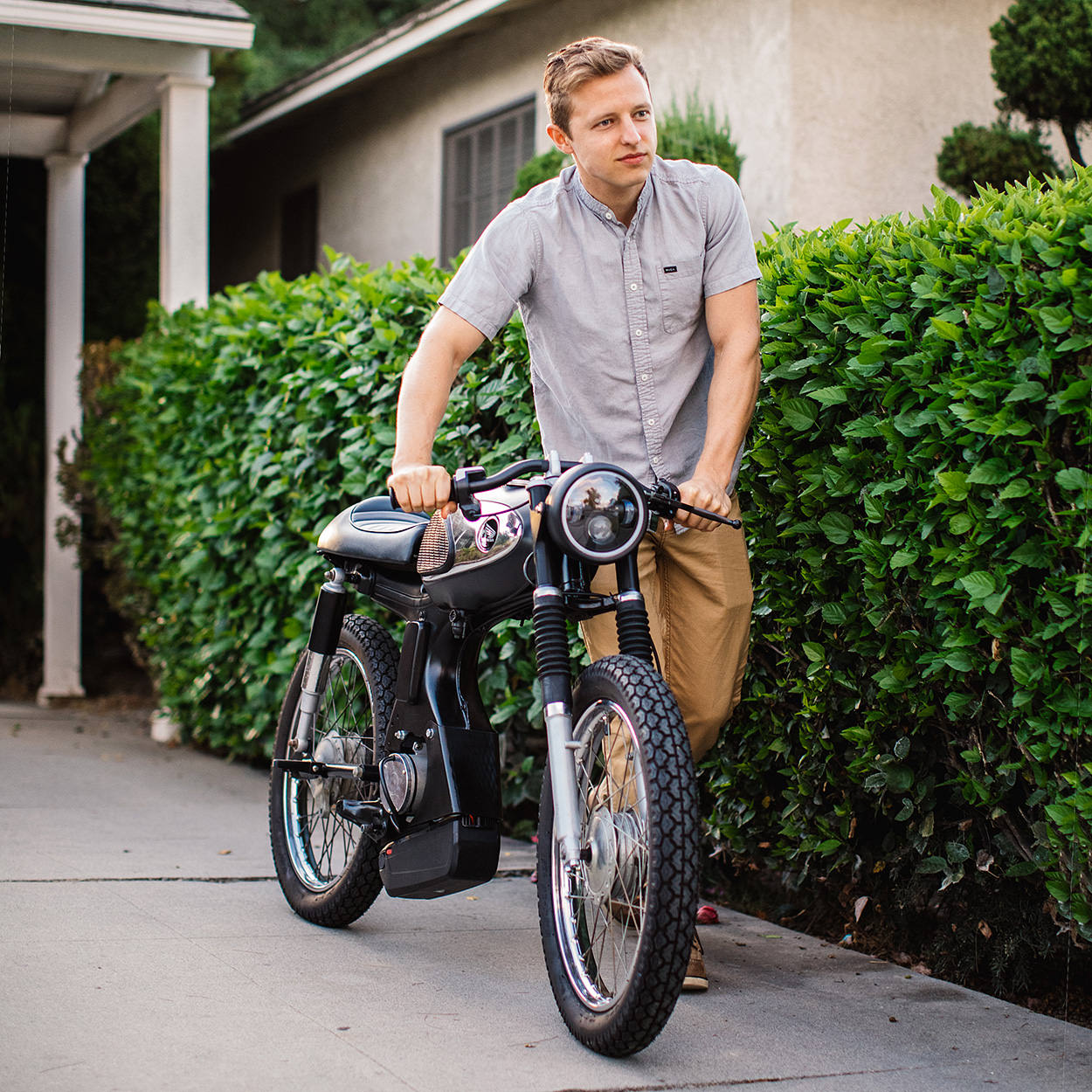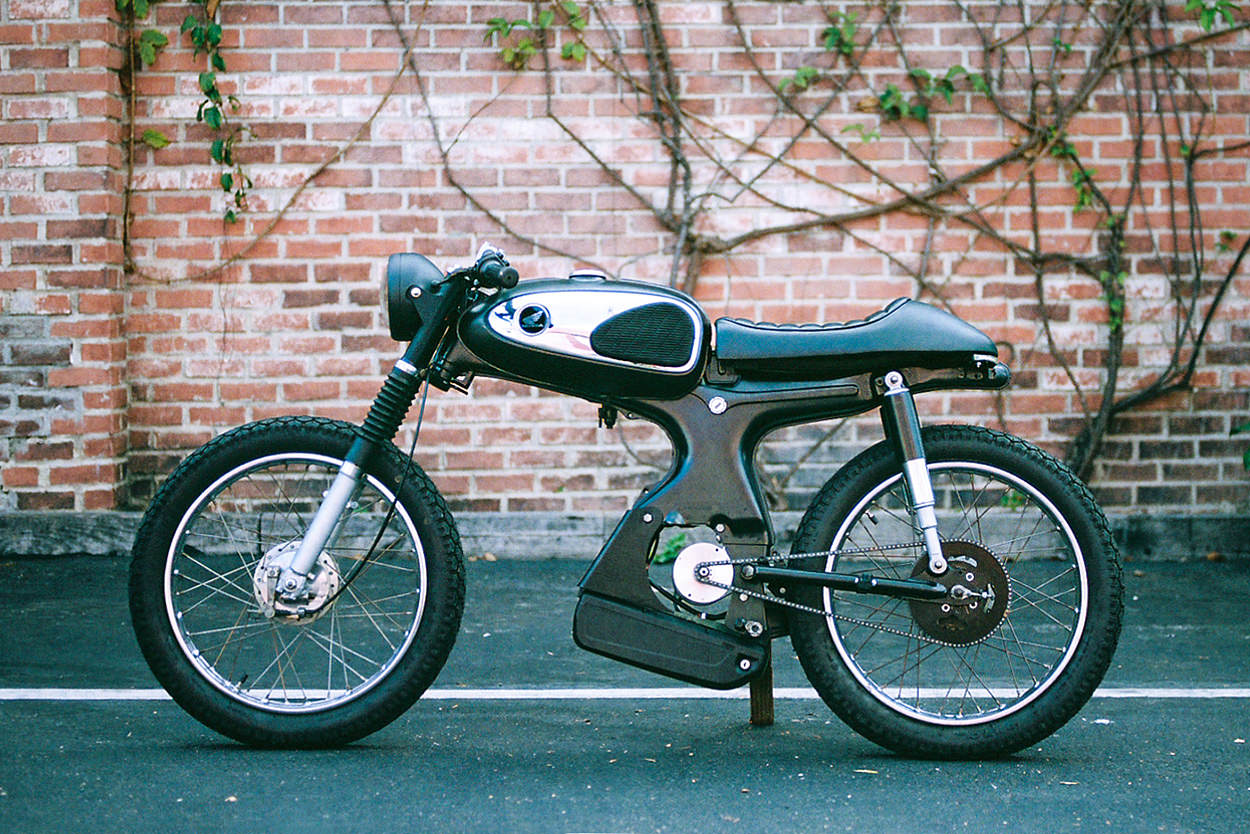
Long before ‘bike build off’ competitions became popular with manufacturers, Deus held one every year—in the car park next to their original store in Sydney, Australia.
The Deus contest is now a global event, and attracts a weird and wonderful selection of amateur builds. This year’s overall winner was a humble Honda S90 converted to electric power. It beat out over 200 other entries and was built for the princely sum of just $929.
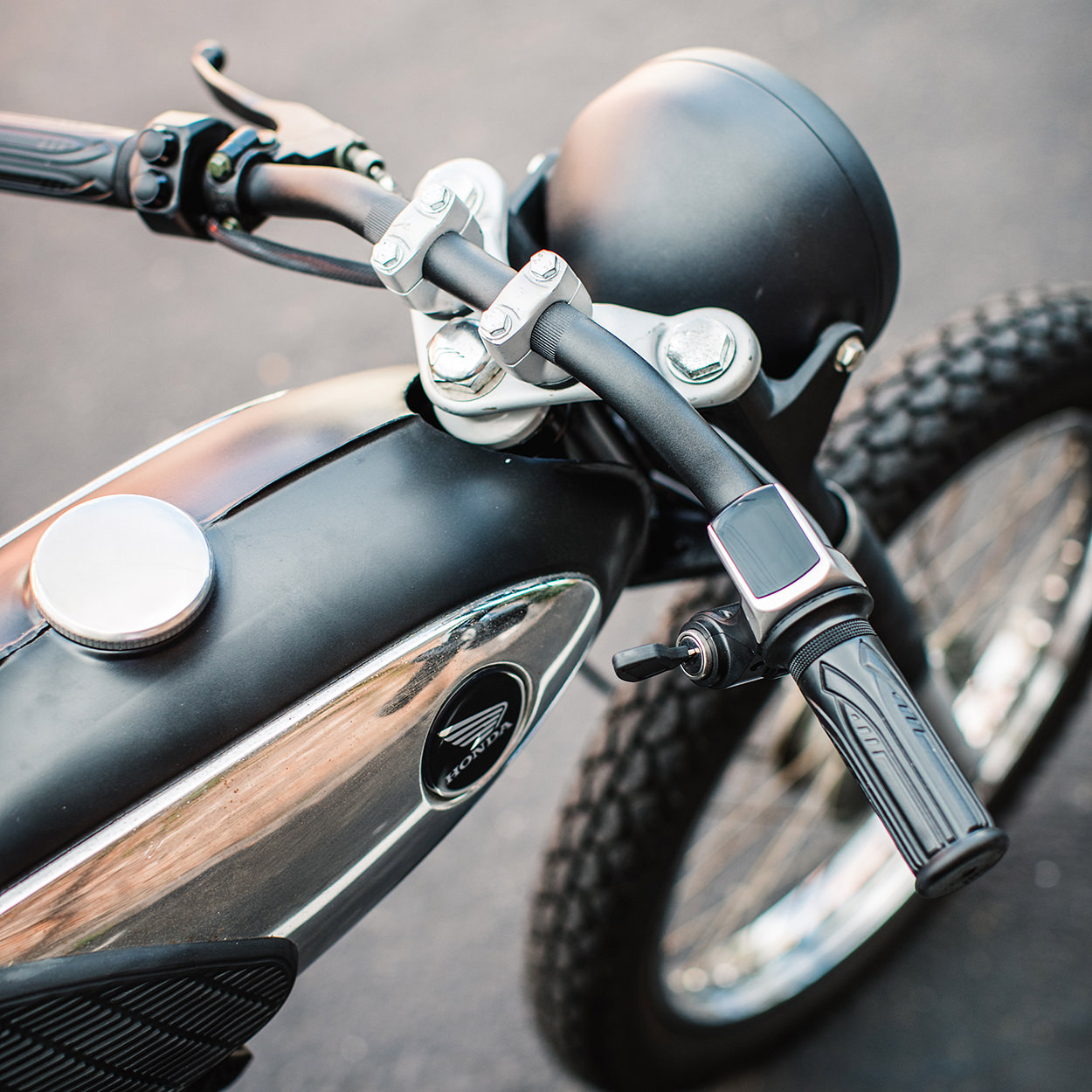
The man behind the moped is Aaron Laniosz, a designer who moved to California after finishing a Master of Architecture degree in Illinois.
“I’m still passionate about architecture,” he tells us, “but I’ve expanded into the realms of furniture design, products, robotics … and now motorcycles.”
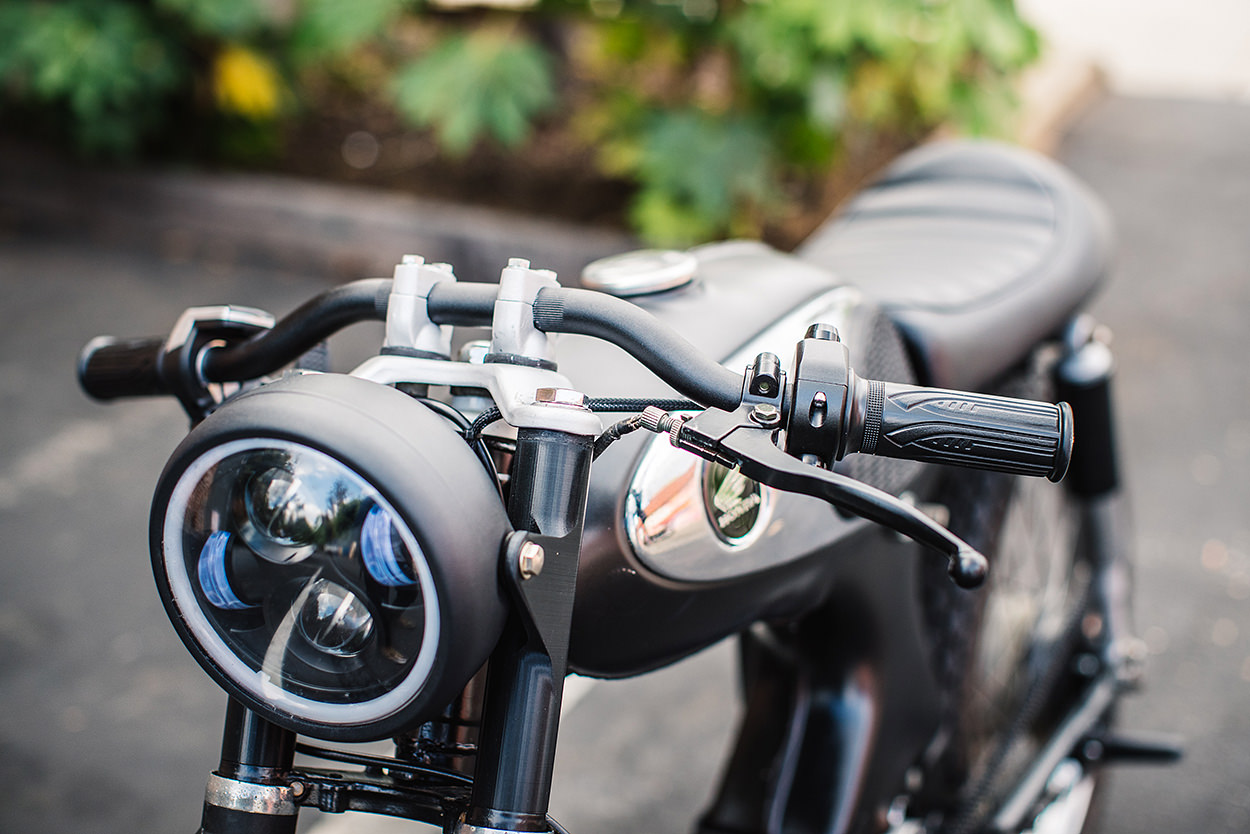
The little Honda is Aaron’s first build, but he’s loved motorcycle design and culture since an early age. And when he arrived in California, he wanted two things: his first surfboard and his first motorcycle.
“I picked up both on Craigslist. I paid $40 for each. The surfboard was riddled with holes, and the motorcycle was rusted and seized.” The seller had used the S90 as a parts bike—there was only a slim chance it would ever run again.
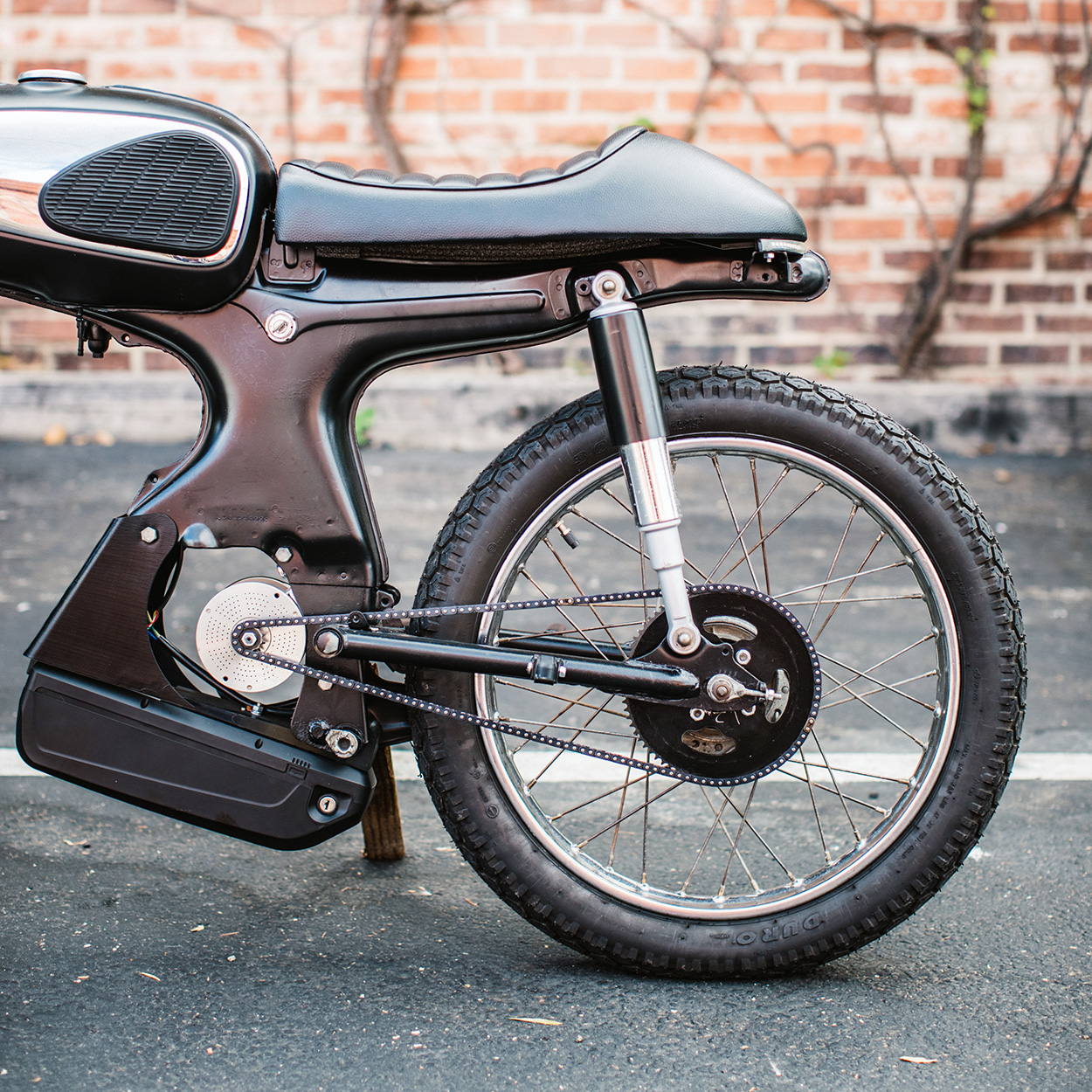
The first difficulty was squeezing the moped into the back of Aaron’s car. The seller promptly grabbed a wrench, removed the front wheel and together they wedged it in.
Back in his apartment, Aaron began meticulously dismantling, removing the rust piece by piece until he had a naked frame. “I sprayed everything with two cans of satin black spray paint. Then I began to reassemble.”
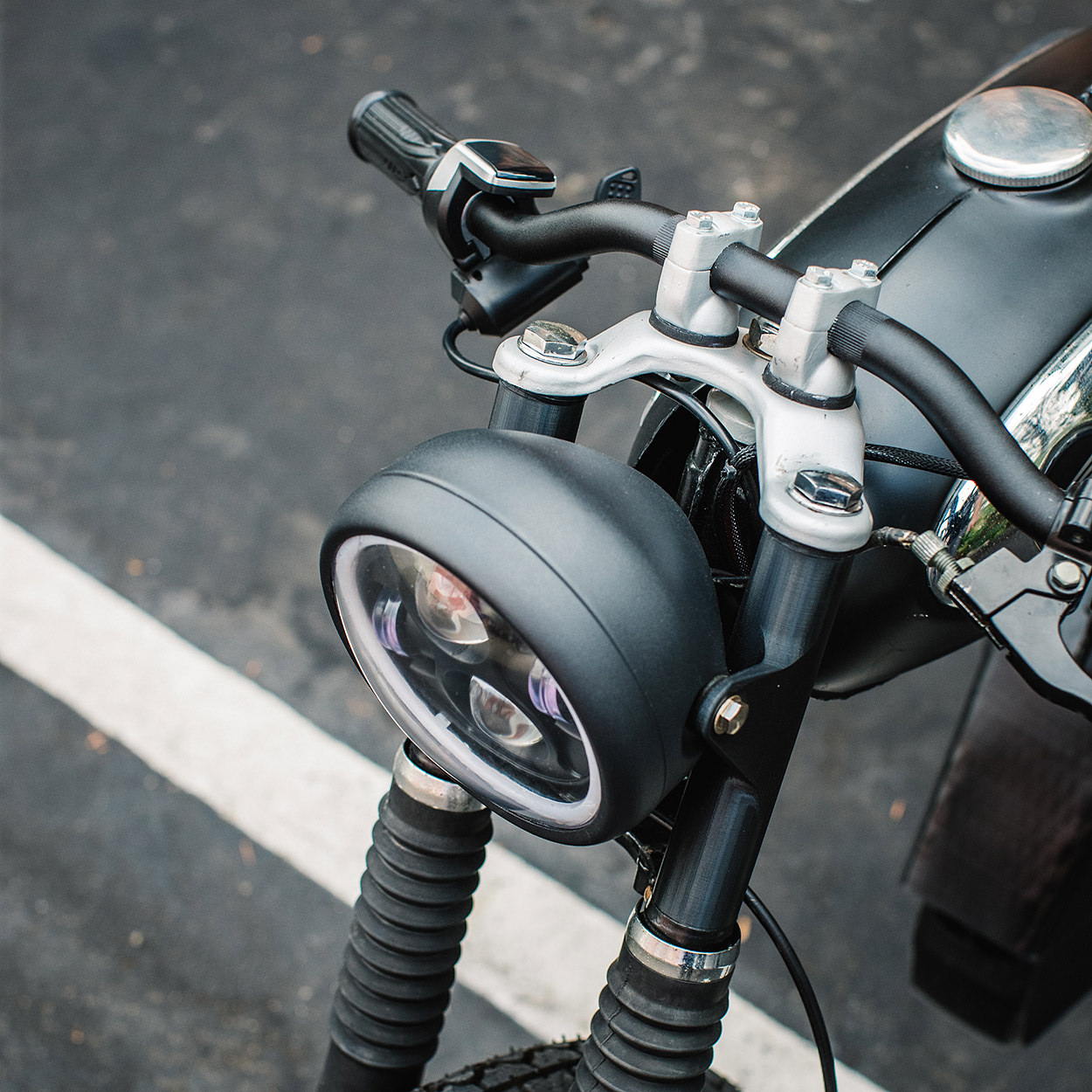
This was no ordinary refresh-and-replace job though: Aaron has converted the S90 into an EV, and possibly scored a world first in doing so. (Enterprising builders have converted the loosely-related Cub to electric power in the past, but we’ve never heard of an S90 getting the shock treatment.)
Aaron bought an electric mountain bike battery rated at 48V and 17Ah. “This isn’t hugely powerful or high capacity,” he explains, “but I calculated that it could carry me to and from work and the gym on a single charge.”
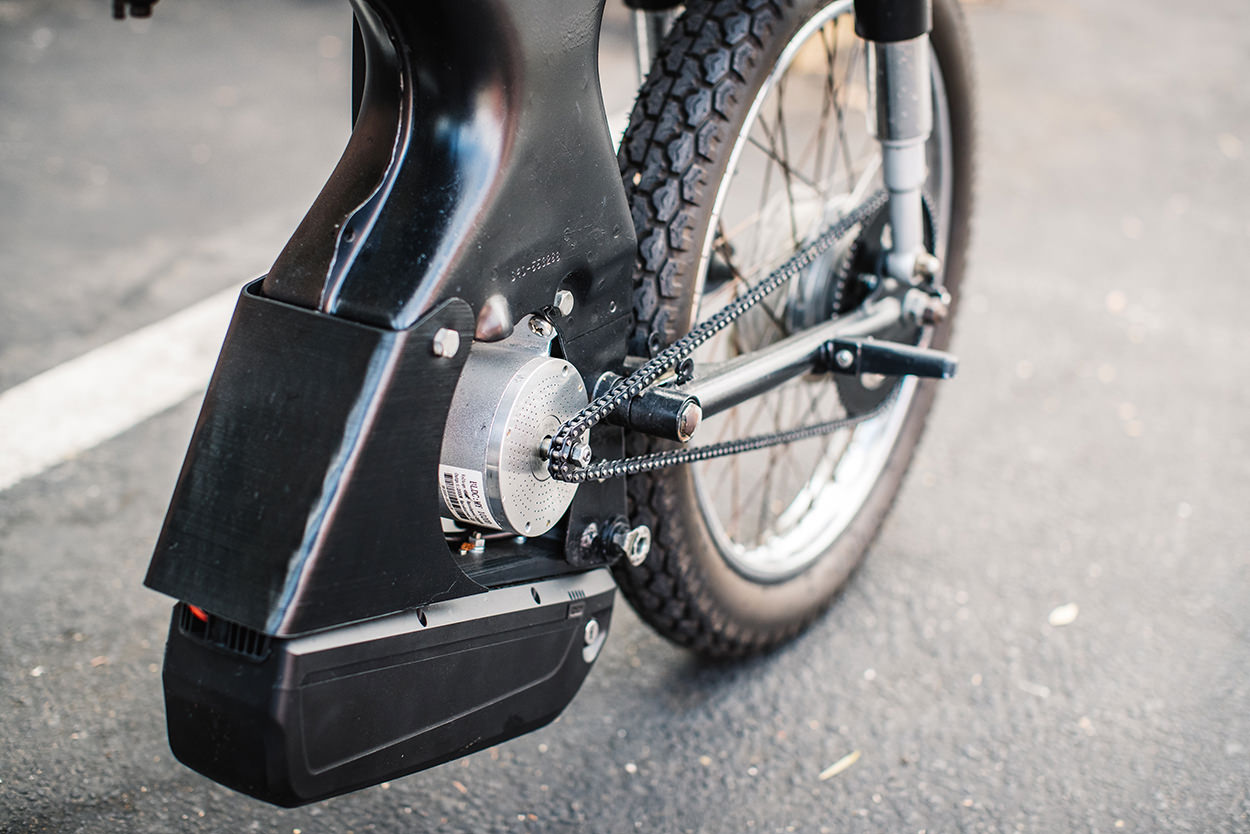
The battery came with a charger that plugs directly into the wall. “My electricity usage is included in my rent, so the running cost of the motorcycle has been completely free since I finished the build!”
The biggest challenge was shop space, rather than the bike itself. “I built the Honda in my studio apartment, and a handheld Dremel was the only real power tool I had access too,” says Aaron. That ruled out the metalwork often seen on a custom build: no welding, no cutting, and no grinding.
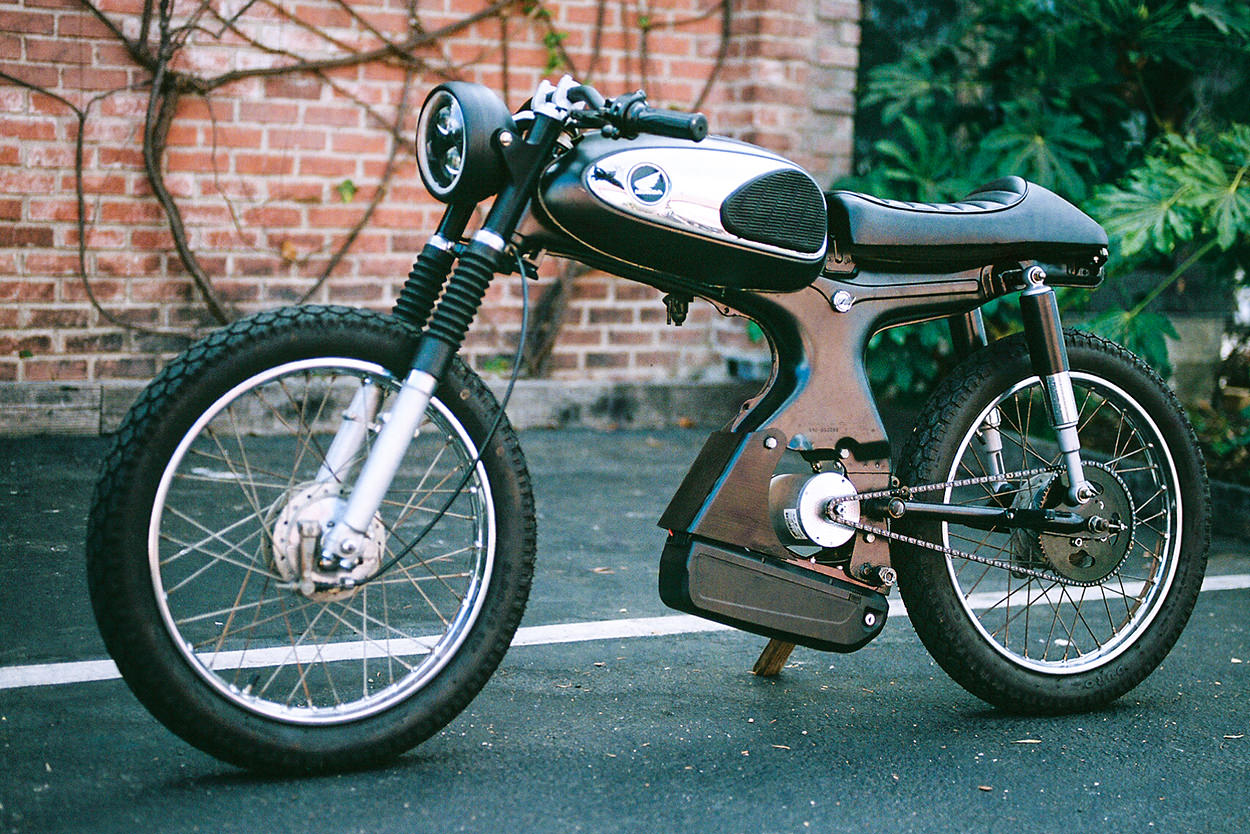
“The bike and all of its pieces sat on the floor between my bed and my kitchenette. I stepped over it each day getting out of the shower.” It proved to be both a blessing and a curse. It forced Aaron to focus on building a functioning motorcycle as quickly and as simply as possibly.
“My secret weapon in this task was access to a 3D printer and my CAD modeling skills,” he says. “I fabricated ten critical parts out of 3D printed NylonX Carbon Fiber Filament, which now hold the bike together—mounting the motor, battery, seat, and headlight.”
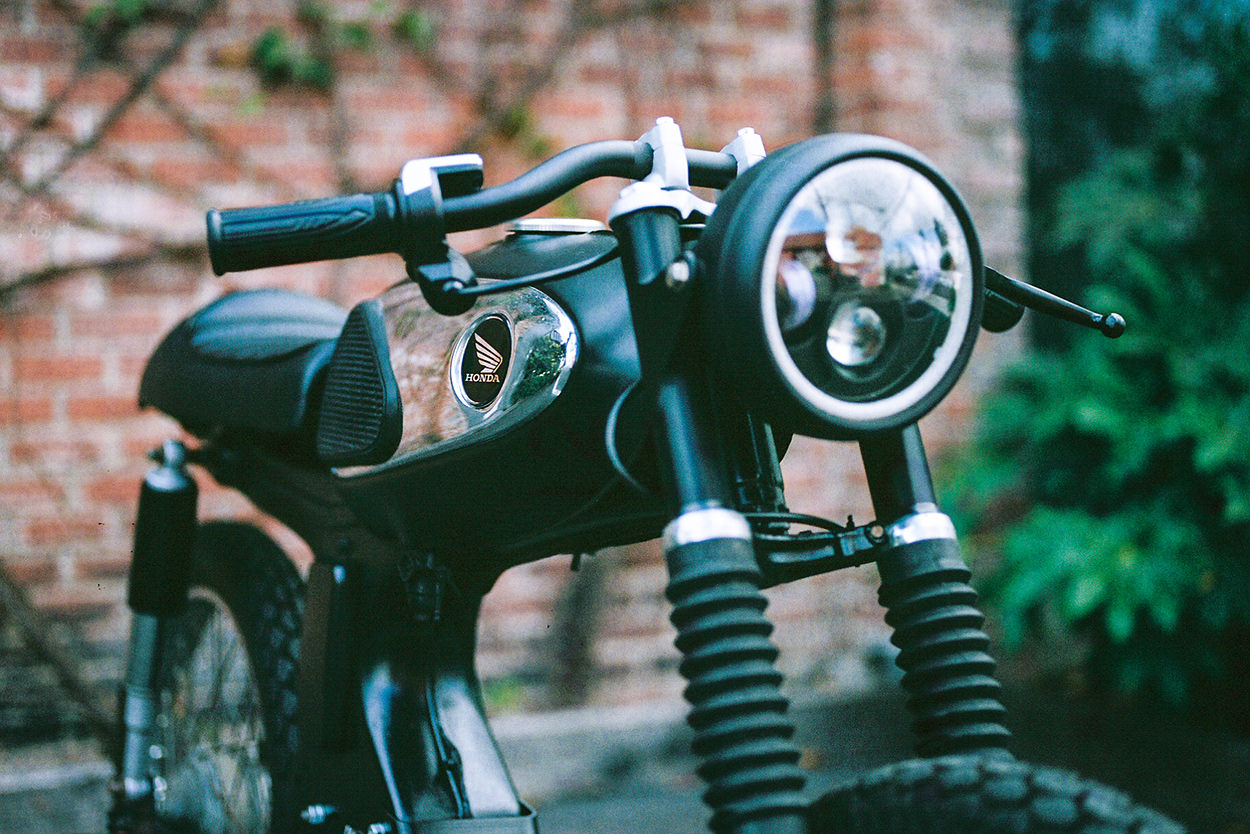
The whole build was a learning experience with endless Google and YouTube searching. “The moment I mounted the new tires and got it rolling, I was so stoked!”
“I stopped building and rode the bike for over a month without proper brakes. Now I ride the bike to the gym and back every single day. It has its quirks, but nothing beats rolling around on something you built with your own hands.”

The legality of this sort of build, transplating tech from one era to another, is still a slightly grey area. “I have a pretty convincing argument for the bike being classified as a Type II e-bike,” says Aaron.
“California has published a very clear set of categories for electric powered vehicles. My build is in the category of Type II, which its legal on public roads without license or registration. This seems to be the classification many e-bike and electric moped start-up companies are working in. The one contingency is that I limit my speed to 20mph…any faster could get me in trouble.”
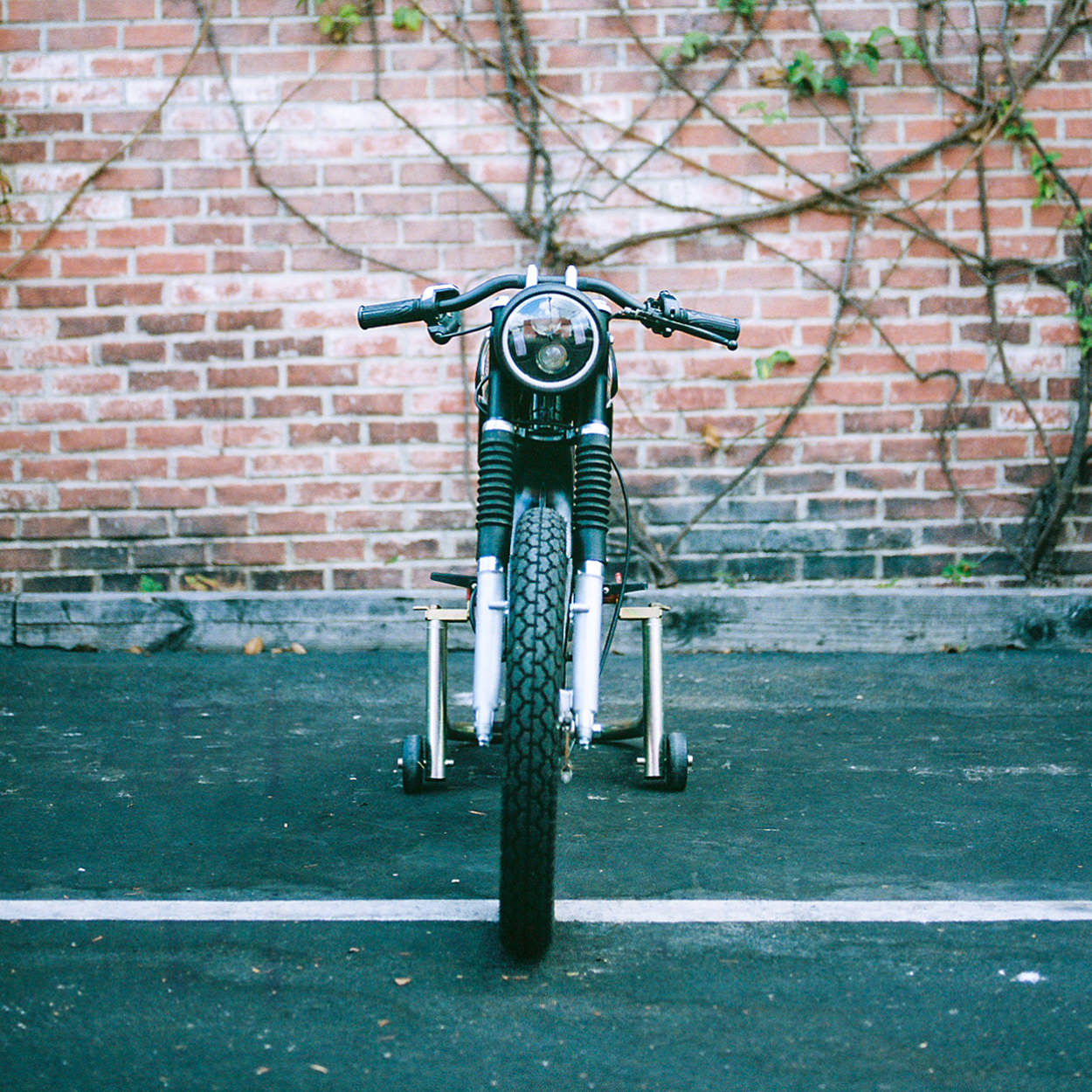
For us, the best part of the story is that it’s a home build in the truest sense, and cost less than a grand for a functioning electric moped. (“It cost $929.97. I kept a detailed spreadsheet.”)
Aaron is now inspired to continue his adventures in motorcycle building. “I just picked up a 1974 Kawasaki G3, in a comparable state of disrepair to my first Craigslist purchase!”
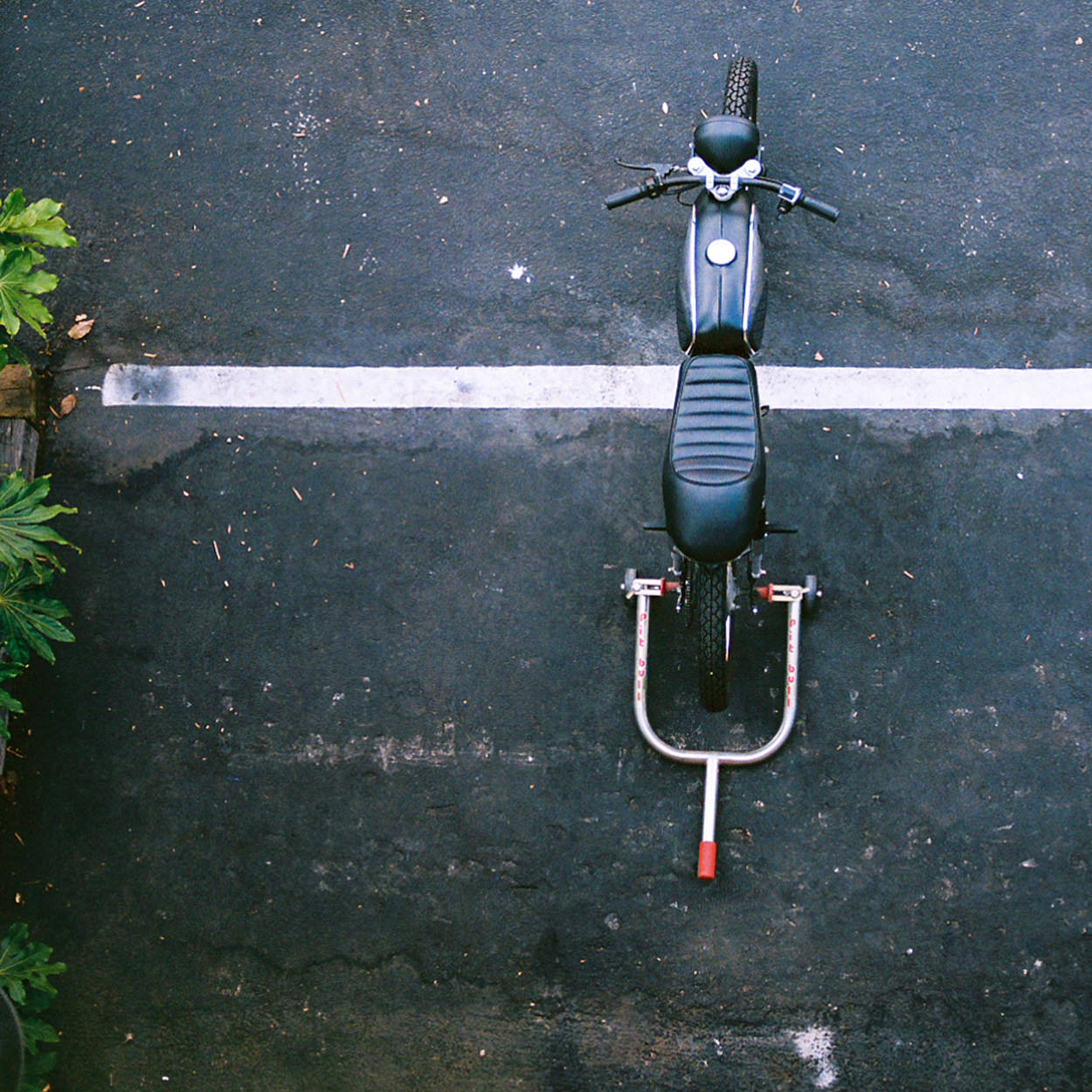
“I doubt a conventional build will garner as much attention, but I would really love to have a stinky, noisy machine after all of this work with batteries and wires. I’m trying to orient my career trajectory toward working with my hands and creating beautiful, functional projects—in whatever form they may take.”
Kudos to that—and we’ll be keeping an eye on your progress, Aaron.
Aaron Laniosz Instagram | Images by Monti Smith
